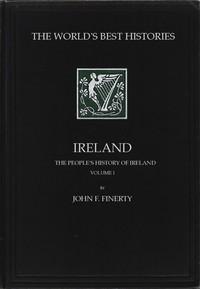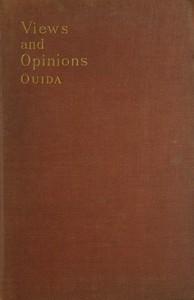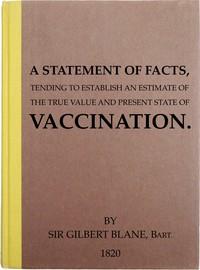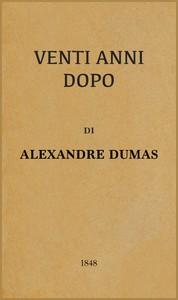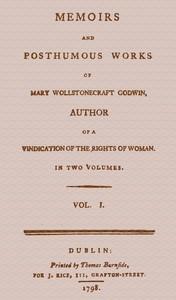|
|
Read this ebook for free! No credit card needed, absolutely nothing to pay.Words: 132940 in 18 pages
This is an ebook sharing website. You can read the uploaded ebooks for free here. No credit cards needed, nothing to pay. If you want to own a digital copy of the ebook, or want to read offline with your favorite ebook-reader, then you can choose to buy and download the ebook.

: Ireland: The People's History of Ireland Volume 1 (of 2) by Finerty John F John Frederick - Ireland History@FreeBooksThu 08 Jun, 2023 t. Scientists claim that these bogs are undermined by bodies of water, which, when flooded, lift the crust and carry it with them, in their effort to find their natural level. It is well known in Ireland that several small, but deep, lakes now occupy places that were formerly covered by these strange formations. We will devote a separate chapter to other features of this interesting country. Further of the Characteristics and Resources of the Island--Present Form of Government GOLD, silver, copper, lead, iron, and other malleable minerals are found in Ireland. The gold is discovered in small quantities, at least in modern times, but the beautiful ornaments, composed of that precious metal, and much used by the ancient Irish nobility, preserved in the Museum of the Royal Irish Academy, Dublin, and elsewhere in Ireland and Great Britain, would indicate that it was at one time plentiful in the island. Silver is found in paying quantities in several districts, and silver mines are now in operation in the northern portion of Munster. The lead, copper, and iron deposits have never been seriously worked, and, therefore, it is impossible to arrive at any satisfactory estimate of their extent. Coal is found in many counties, but the most extensive fields are in Ulster. Much light is thrown on this subject by Kane's "Resources of Ireland," which can be found, most likely, in the public libraries. It gives most interesting statistics, but they would be far too heavy for our more condensed narrative. Ireland possesses over seventy harbors. Fourteen are of the first class and can shelter the very largest sea-going vessels, whether naval or mercantile. Unhappily, excepting those of Dublin, Cork, Limerick, and Belfast, they are comparatively little used for commerce, for reasons that will present themselves in succeeding chapters. Although in olden times a thickly wooded country, Ireland of to-day is rather bare of forests. There are numerous luxuriant groves and woodlands, and many of the highroads are bordered with stately trees. The "quick-set hedges," planted with thorn shrubs, give, particularly in summer, a well-furnished appearance to the country, except in a few rather barren districts, where stone walls, as in portions of New England, are quite common. Irish farms are nearly all divided and subdivided by these formidable fences, quick-set or stone, so that, when viewed from any considerable height, the surrounding country looks like a huge, irregular checker-board--a much more picturesque arrangement of the landscape than our American barbed-wire obstructions, but at the cost of a vast amount of good land, in the aggregate. The island contains many populous, finely built cities, well governed under local municipal rule. Dublin, the capital, contains, including suburbs, about 300,000 people, and is considered a very handsome metropolis. It is surrounded by enchanting hamlets, and the sea-bathing resorts in the neighborhood are delightful. Belfast, the great commercial city of Ulster, is almost as populous as Dublin, and has many of the thrifty characteristics of an American municipality. Cork, Waterford, Limerick, Galway, Sligo, Londonderry, and Drogheda are still places of much importance, although some of them have greatly declined, both in wealth and population, during the last century. Owing to persistent agitation, and some fierce uprisings, which caused the imperial government to listen to the voice of reason, the social and political conditions of the Irish people have been somewhat improved of late years. The Irish Church was disestablished by the Gladstone Ministry, in 1869, and, under the leadership of Isaac Butt, Parnell, Davitt, and other Irish patriots, Protestant as well as Catholic, the harsh land laws have been greatly modified, and the Irish people have a better "hold on their soil," and are much less subject to the capricious will of their landlords than formerly. They are, also, much better lodged and fed than in the last generation, and education, of a practical kind, has become almost universal. The national school system has many features in common with our own, and is improving year by year. In the higher branches of education, Ireland is well supplied. Trinity College, Dublin, the Alma Mater of many celebrated men, has existed since the reign of Queen Elizabeth, but, until the end of the eighteenth century, was not open to Catholics. Maynooth College, in Kildare, is the great Catholic ecclesiastical seminary of Ireland, and there is also a Catholic university in Dublin. Carlow, Kilkenny, Wexford, and other cities have Catholic colleges, and there are Protestant seats of learning in Ulster and other provinces. Cork, Belfast, and Galway have each branch universities, called "Queen's Colleges," which are conducted on a non-sectarian basis. These are only a few of Ireland's educational institutions, but they serve to illustrate the agreeable fact that a dearth of opportunity for acquiring learning is no longer a reproach to the Irish people, or, rather, to their English law-makers. The taxes which support the institutions maintained by Government are paid by Ireland into the Imperial Treasury, so that Great Britain is not burdened by them, as many suppose. Recently, a commission appointed by the British Parliament to inquire into the financial relations between Great Britain and Ireland reported back that the latter country was overtaxed annually to the amount of ,000,000. This grievance, although complained of by all classes, has not yet been redressed. Dublin, Belfast, and other leading Irish cities possess very choice and extensive libraries. That of Trinity College, in the first-mentioned city, is considered one of the best in Europe, and it is particularly rich in ancient Irish manuscripts, some of which have been translated from the original Gaelic into English by the late Dr. John O'Donovan, Professor Eugene O'Curry, and other Irish savants. There are many large circulating libraries in all the principal municipalities, and most of the smaller towns. These are patronized, in the main, by poor people of literary taste, who can not afford satisfactory libraries of their own. There is now a revival of Irish literature in Great Britain as well as in Ireland itself. Many English and Scotch firms have taken to printing Irish prose and poetry in the English tongue, so that Irish authors are no longer confined, as they were, with a few exceptions, of old, to an insular constituency. Irish literary work of merit, when not strongly patriotic, sells readily in Great Britain to-day. This is due, partly, to a growing appreciation of Irish talent among the more liberal classes of the English people, and still more, perhaps, to the very large Irish population that has developed itself on the soil of "the predominant partner" within the last half of the nineteenth century. There is a strong Chartist, or republican, element in England friendly to the Irish claim of legislative independence, and this element, which we hear comparatively little of in America, for reasons it is not necessary to discuss in this history, is growing more powerful as time rolls by, and some day, not very distant, perhaps, is bound to greatly modify the existing governmental system of the British Empire, and render it more popular. Ireland is very rich in monastic and martial ruins. The round towers which sentinel the island are declared by many antiquaries to antedate the Christian period, and are supposed to have been pagan temples dedicated to the worship of the sun, which, some historians claim, was Ireland's chief form of the Druidic belief. "The names of their founders have vanished in the gloom, Like the dry branch in the fire, or the body in the tomb, But to-day, in the ray, their shadows still they cast-- These temples of forgotten gods, these relics of the past." The grass-grown circular raths, or "forts," as the peasantry call them, varying greatly in diameter, are supposed to be remnants of the Danish invasion, but many archaeologists place them at a much earlier date, and give them not a Danish but a Danaan origin--the latter tribe being claimed as among the first settlers of Ireland. The largest "fort" or "dun" in the island is that near Downpatrick, which is sixty feet high and three-quarters of a mile in circumference. Much of the stately architecture seen in the ruins of abbeys, churches, and chapels belongs to the Anglo-Norman period, as does also the military architecture, which survives in such types as the keeps of Limerick, Nenagh, and Trim; but the Celtic type of church construction is preserved, after the lapse of more than a thousand years, in its primitive purity, at Glendalough in Wicklow, Clonmacnois in King's County, and Cong in Galway. Three hundred years of warfare with the pagan Danes, and five hundred with the Anglo-Normans and Anglo-Saxons, made Ireland the Island of Ruins, as well as the Island of Saints and Scholars. Before January 1, 1801, Ireland was a distinct and separate kingdom, having a Parliament of her own and connected with Great Britain by what has been called "the golden link of the crown." How that Parliament was, unfortunately for all concerned, abolished will appear in its proper order. Since 1801 Ireland has been governed by the Imperial Parliament, sitting in London, composed of representatives from England, Scotland, Ireland, and Wales--670 in all, of whom 103 are Irish members. Of these latter, 82 are Nationalists, or Repealers of the Act of Union, while 21 are Unionists, or adherents of the present political connection. The preponderating vote of Great Britain hopelessly overwhelms the Irish representation, and hence the work of reform, as far as Ireland is concerned, is slow and difficult. The executive functions are intrusted to a Lord Lieutenant, who is appointed by each succeeding Ministry, to represent the monarch of Great Britain. He is assisted in his duties by a Chief Secretary, two Under Secretaries, a Lord Chancellor, a Lord Chief Justice, a Master of the Rolls, a Chief Baron of the Exchequer, many less prominent officers, and a Privy Council, which comprises several of the officials mentioned, together with the leading supporters of the crown in the capital and throughout the country. Some of the official members of this Council are not natives of Ireland; and the Lord Lieutenant himself is almost invariably an English or Scotch aristocrat of high rank and liberal fortune. No Catholic can fill the office of Viceroy of Ireland. The authority of the latter is, to all intents and purposes, absolute. In seasons of political agitation, even when there is no violence, he can suspend the ordinary law without having recourse to Parliament. This power has been frequently exercised even in this generation. The Lord Lieutenant's official residence is Dublin Castle, but he has also a commodious viceregal lodge in the Phoenix Park. His salary is 0,000 per annum--just twice that of our President--but, in general, he spends much more out of his private fortune, as he is, nearly always, chosen for his wealth as much as for his rank. When he goes among the people, he is, almost invariably, attended by a strong cavalry escort and a dashing staff of aides-de-camp, glittering in silver, steel, and gold. The military garrison of Dublin is strong, not often under 10,000 men, and at the Curragh Camp, about twenty miles distant, in Kildare, there is a much larger force. Most of the large towns are also heavily garrisoned. Thus, after an occupation, either nominal or actual, of seven and one-third centuries, England still finds it expedient to govern Ireland as a military district--a sad commentary on the chronic misgovernment of ages. Free books android app tbrJar TBR JAR Read Free books online gutenberg More posts by @FreeBooks

: A Statement of Facts Tending to Establish an Estimate of the True Value and Present State of Vaccination by Blane Gilbert Sir - Smallpox; Vaccination@FreeBooksThu 08 Jun, 2023
|
Terms of Use Stock Market News! © gutenberg.org.in2025 All Rights reserved.

